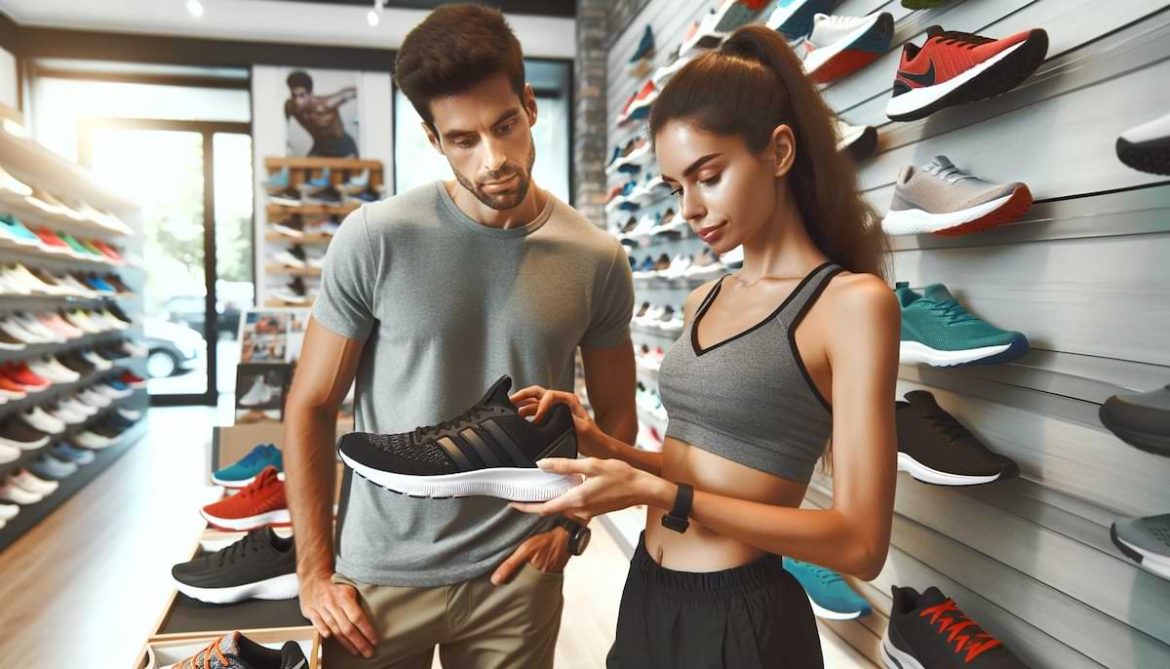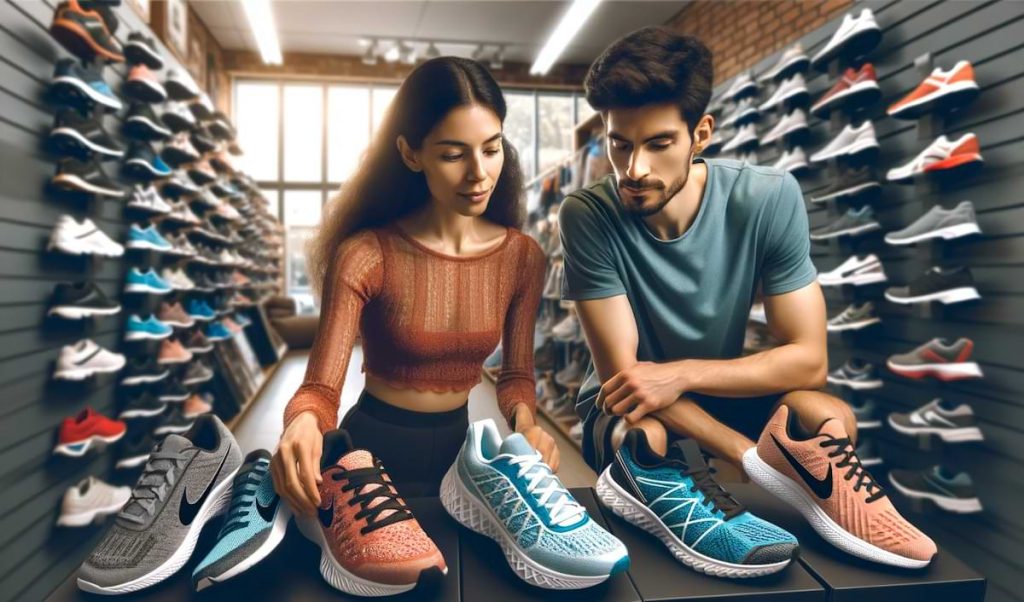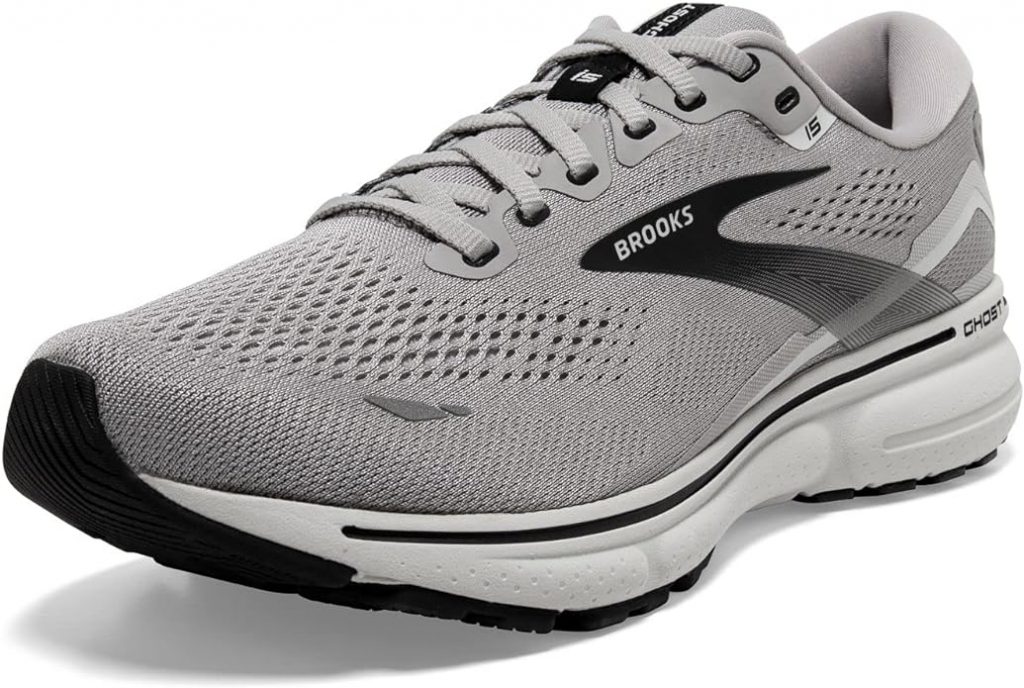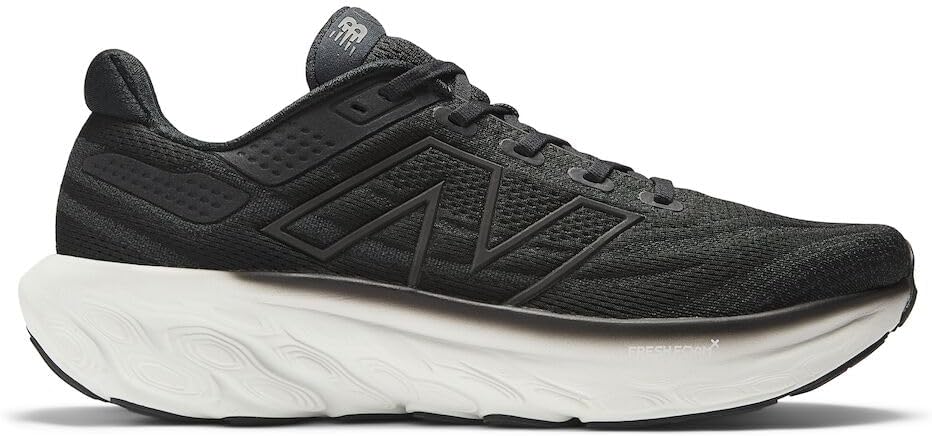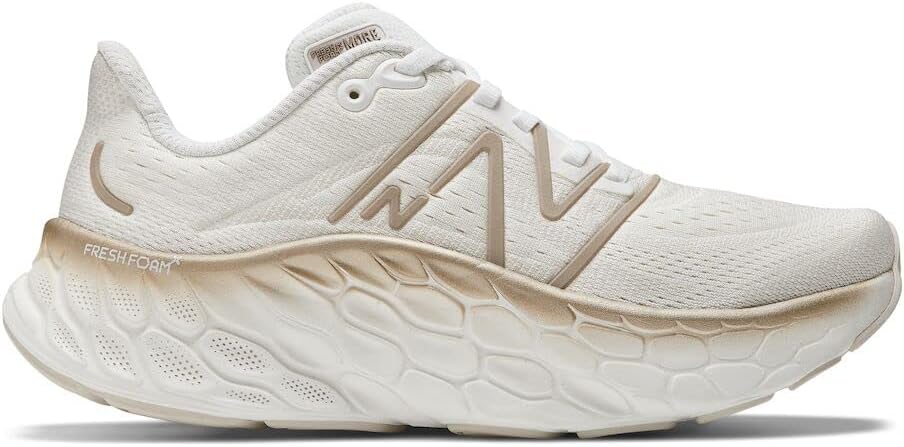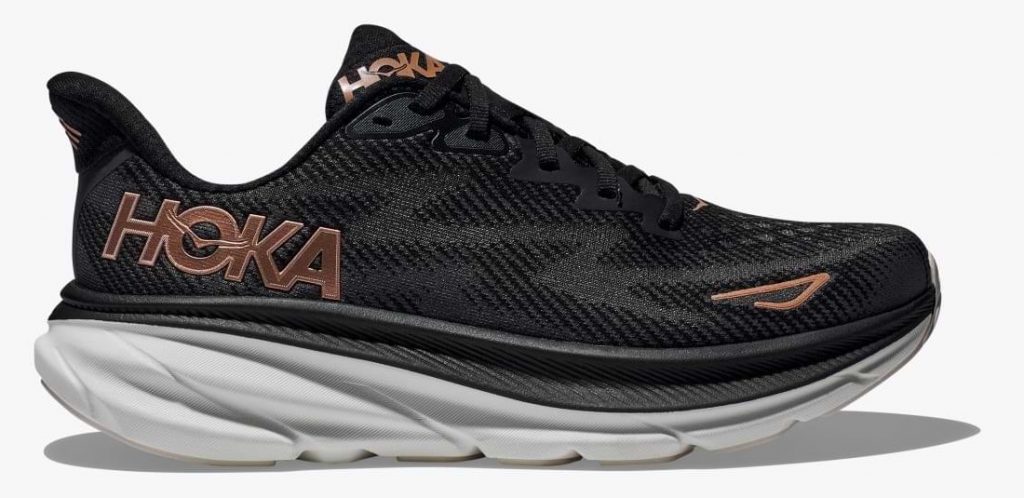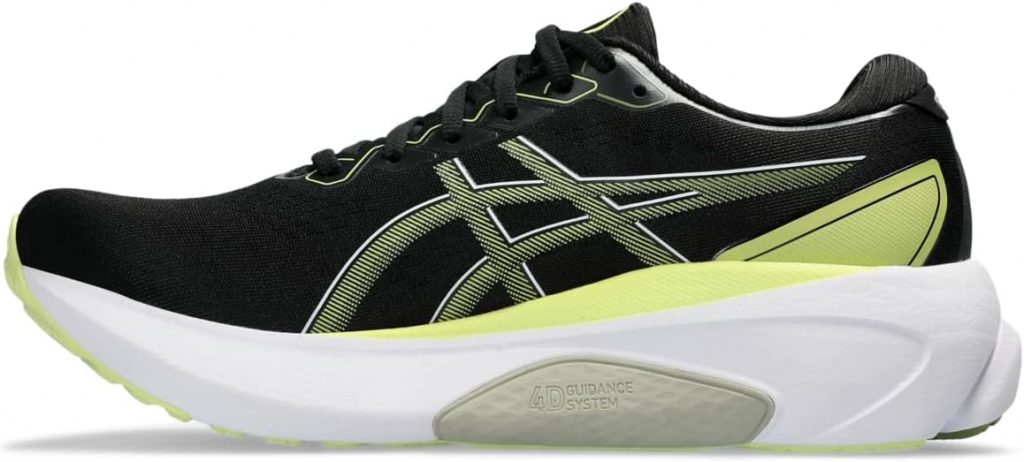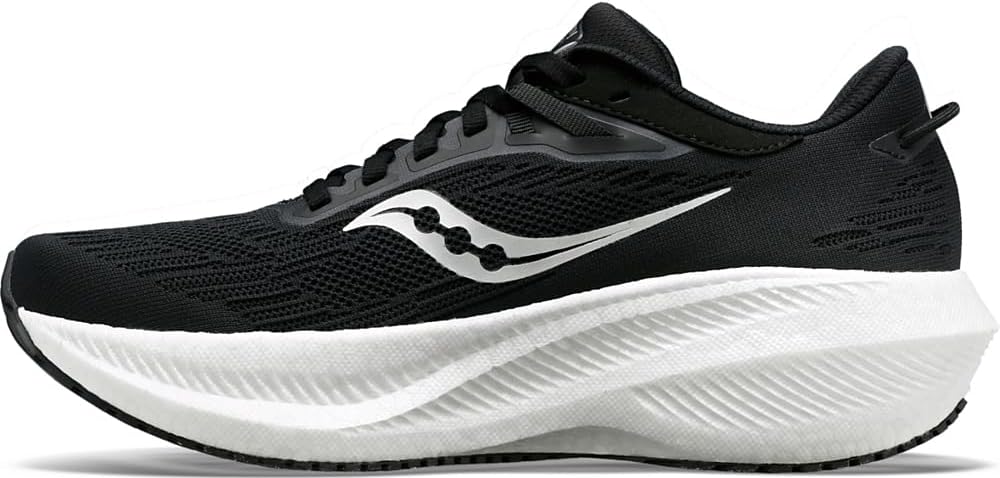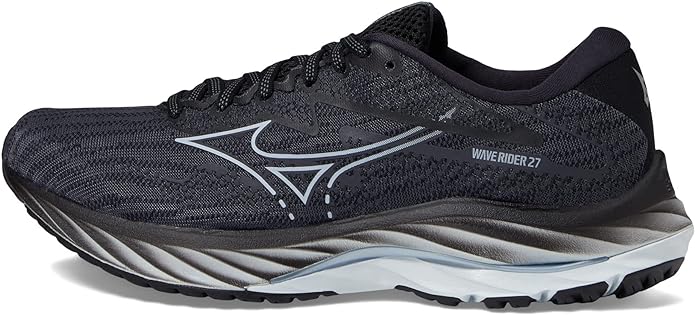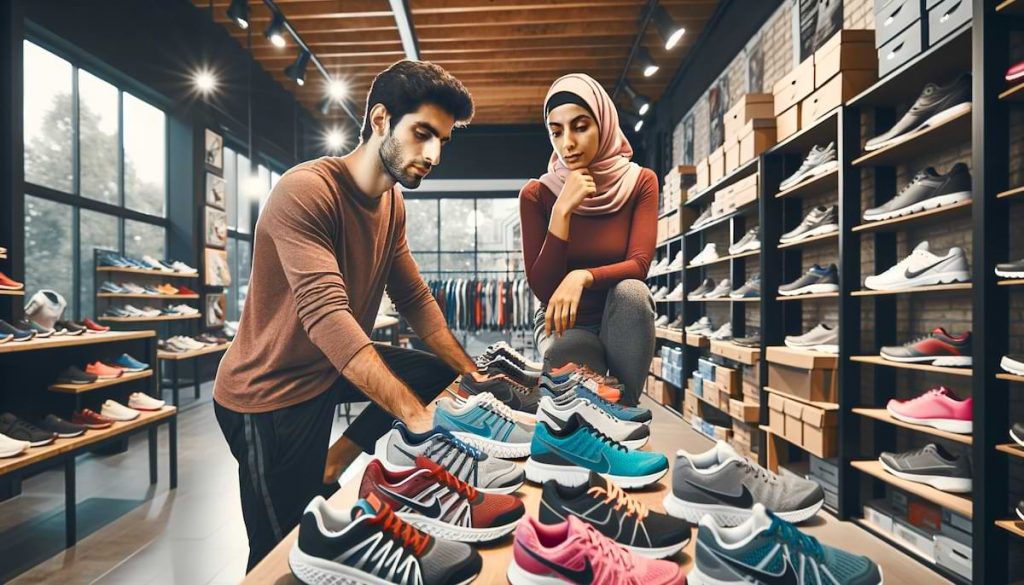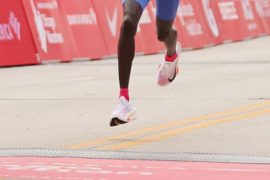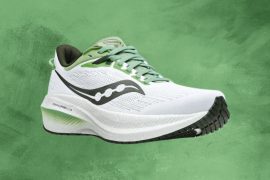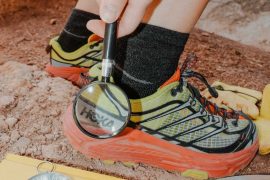Choosing the right pair of running shoes is essential for beginners, as it can greatly impact their comfort, performance, and overall running experience. With the constantly evolving market, it can be challenging to identify the best running shoes for beginners. To help you make an informed decision, I have compiled a list of the top ten best running shoes for beginners in 2024.
This guide will explore each shoe’s features, technologies, and benefits, enabling you to find the perfect pair that suits your needs.
Read more: Best Running Shoes for Overweight Runners 2024
10 Best Running Shoes for Beginners 2024
Whether you’re embarking on your first jogging experience or are transitioning from indoor workouts to outdoor runs, the right running shoes can make a big difference. This guide will provide insights into the latest, user-friendly, and comfortable footwear ideal for those new to running.
I will be focusing on shoes that offer adequate support, cushioning, and stability, all while ensuring you stay within your budget. Let’s find the perfect pair to kick-start your running journey in 2024.
1. ASICS Gel-Cumulus 25 – Best Overall Running Shoe for Beginners
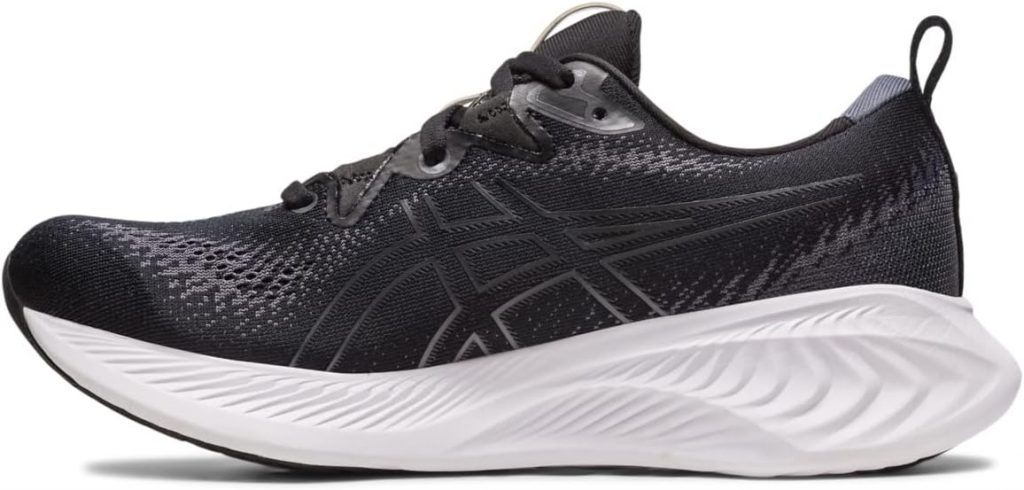
The ASICS Gel-Cumulus 25 stands out for its impressive features tailored for new runners. One of its key technologies is the FF BLAST PLUS, offering both lightweight impact absorption and a lively rebound, making each step feel effortless and energized. Another notable inclusion is the PureGEL technology, which ensures lightweight cushioning, aiding in smoother landings – a boon for beginners.
The Gel-Cumulus 25 also boasts an engineered jacquard mesh upper, which enhances breathability and comfort, essential for long training sessions. Notably, ASICS demonstrates its commitment to sustainability with this model. The sock liner is created using a solution dyeing process that significantly reduces water and carbon emissions, aligning with eco-friendly practices.
Lastly, for those early morning or late evening runs, the shoe features reflective details, enhancing visibility in low-light conditions. This combination of performance, comfort, and sustainability makes the ASICS Gel-Cumulus 25 an excellent choice for novice runners.
This is one of my favorite among the best running shoes for beginners in 2024 not least because of its excellent price/quality ratio.
2. Brooks Ghost 15 – Best for Heavy Runners
The Brooks Ghost 15 is a noteworthy mention for those seeking a blend of comfort and performance. The shoe is designed for runners who desire a smooth, enjoyable running experience. The Ghost 15 is enhanced with a refined 3D Fit Print, ensuring a seamless and secure fit, crucial for new runners who are still adjusting to the demands of running.
Notably, the Brooks Ghost 15 holds the distinction of being a certified PDAC A5500 Diabetic shoe and has earned the APMA Seal of Acceptance, indicating its high quality and suitability for a wide range of foot types.
The shoe offers neutral support while boasting high energizing cushioning, making it versatile for various activities, including road running, cross-training, and gym workouts. The Ghost 15’s predecessor, the Ghost 14, laid a strong foundation which this model builds upon.
A key feature is the new DNA LOFT V2 cushioning in the midsole, which is softer and lighter, providing uninterrupted cushioning underfoot with each step. This balanced, soft cushioning is crucial for beginners looking for comfort during their runs.
Additionally, the Ghost 15 ensures a smooth and stable ride. The soft midsole works in tandem with the Segmented Crash Pad, an integrated system of shock absorbers, to facilitate a fluid transition from landing to toe-off, regardless of how the foot lands.
The enhanced upper, made of engineered air mesh, offers both comfort and breathability, with the added 3D Fit Print for structure. This combination of features makes the Brooks Ghost 15 an excellent option for beginners who value a shoe that supports a variety of running styles and conditions.
Read more: Brooks Ghost 16 release date
3. New Balance Fresh Foam 1080 v13 – Best New Launch for Beginners
New Balance Fresh Foam X 1080 V13 is celebrated for its Fresh Foam X midsole, which incorporates about 3% bio-based content. This innovative approach not only offers the most cushioned experience in the Fresh Foam lineup but also reflects New Balance’s commitment to reducing its carbon footprint through renewable resources.
The dual-density midsole is another standout feature, blending two types of foams to strike the perfect balance between comfort and performance. This is especially beneficial for beginners who need a shoe that supports them as they build endurance and technique.
Durability is a key consideration for any running shoe, and the New Balance Fresh Foam X 1080 V13 addresses this with its NDurance rubber outsole technology. This ensures enhanced durability in high-wear areas, making the shoe a long-lasting investment for new runners.
The shoe also includes an engineered air mesh upper, which provides essential breathability and comfort during runs. Lastly, reflective accents are thoughtfully designed to catch the light, offering increased visibility for those early morning or late evening jogs.
Altogether, these features make the New Balance Fresh Foam X 1080 V13 an excellent choice for beginners seeking a reliable, comfortable, and sustainable running shoe.
4. Saucony Ride 16 – Best Budget Running Shoe for Beginners
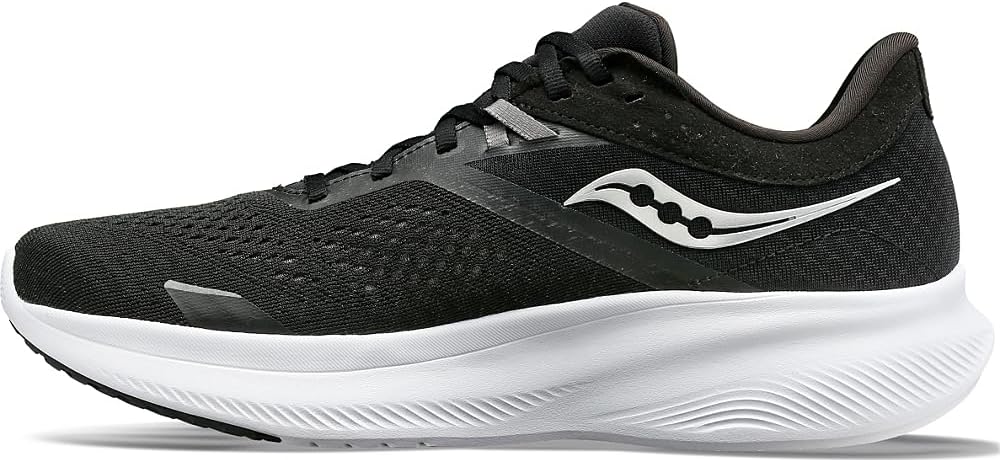
Saucony Guide 16 merits special attention for its emphasis on comfort, a critical factor for new runners. This shoe is engineered to provide the perfect balance of cushioning precisely where it’s needed, making it an all-rounder suitable for a variety of running experiences.
The Guide 16 boasts a PWRRUN foam midsole, which is key to its appeal. This technology offers a pillowy soft cushioning, ensuring each run is more comfortable than the last. This feature is particularly advantageous for beginners who are still adapting to the feel and impact of regular running.
Upon lacing up the Guide 16, runners will immediately notice the smooth fit and the fluid ride it offers. The transition from heel to toe is seamless, which contributes to an effortless running experience, reducing the risk of discomfort or injury.
Another standout aspect of the Saucony Guide 16 is its 360° fit and feel. The shoe is designed with higher sidewalls, allowing the foot to sit into the shoe rather than on top of it. This design creates an incredible underfoot sensation, enveloping the foot in comfort and support.
This feature is particularly beneficial for beginners, providing a stable and supportive environment for their feet as they embark on their running journey.
5. New Balance Fresh Foam X More V4 – Best Cushioned
The New Balance Fresh Foam X More V4 stands out for its exceptional cushioning. Max cushioning, once a niche feature primarily used in ultramarathoning, has gained widespread popularity among various types of runners for its numerous benefits. New Balance has embraced this trend with the Fresh Foam More series.
The Fresh Foam X More V4 showcases New Balance’s advanced performance technology in an ultra-cushioned design. This latest iteration in the series features the most substantial amount of Fresh Foam X ever incorporated into a midsole. This ensures an unparalleled level of comfort, which is especially beneficial for beginners who may need extra cushioning as they ease into their running routine.
The shoe also boasts the largest rocker in the Fresh Foam range. This design facilitates smoother foot strike transitions, making each step feel more natural and less strenuous. Additionally, the wider platform of the shoe strikes an excellent balance between cushioning and support, offering stability which is crucial for those new to running.
The upper construction of the Fresh Foam X More V4 is lightweight and breathable, adding to the overall comfort of the shoe. This aspect is vital for maintaining foot health and comfort during longer runs or in warmer conditions.
The Fresh Foam X More V4 offers a total comfort experience, making it a highly recommended choice for beginners seeking a shoe that combines maximum cushioning with innovative design for an enhanced running experience.
6. Hoka Clifton 9 – Best Hokas for Beginners
The latest addition to the highly acclaimed Hoka Clifton series, the Clifton 9, is a standout model worth mentioning. This ninth version of the award-winning franchise has been meticulously crafted to be lighter yet more cushioned than its predecessors, a combination that is highly beneficial for beginners.
The Clifton 9 achieves a significant milestone by reducing its weight and simultaneously increasing its stack height by 3mm. This alteration results in a rejuvenated underfoot feel, offering a more responsive experience thanks to the new foam and an improved outsole design.
Such features are particularly advantageous for new runners, providing a balance of comfort and responsiveness that can help ease the transition into regular running.
The shoe’s upper has undergone a thoughtful redesign. By removing overlays and hot melts, the Clifton 9 features a more stripped-back, minimalist upper. This redesign not only contributes to the shoe’s lighter weight but also enhances comfort. The heel area is plusher, accommodating a wide range of foot shapes, which is crucial for beginners who are still finding their ideal fit.
Additionally, the Clifton 9 includes a reflective heel panel, increasing visibility during low-light conditions – a thoughtful feature for those early morning or evening runs. The streamlined tongue, equipped with a single-side medial gusset, further adds to the shoe’s overall sleek and comfortable design.
Overall, the Clifton 9’s combination of lightweight design, increased cushioning, and thoughtful upper modifications make it an excellent choice for beginners looking for a reliable, comfortable, and performance-oriented running shoe.
7. ASICS Gel-Kayano 30 – Best Stability Running Shoe for Beginners
This shoe is specifically engineered to offer advanced stability coupled with softer cushioning, making it an ideal companion for distance training.
A standout feature of the ASICS Gel-Kayano 30 is the innovative 4D GUIDANCE SYSTEM. This technology is designed to adapt to the runner’s stride, offering enhanced stability and balance. This is particularly beneficial for beginners, as it supports a more supportive and balanced stride, which is crucial during longer training sessions.
The midsole of the Gel-Kayano 30 has been upgraded with FF BLAST PLUS ECO cushioning, now featuring a 4mm increase in stack height. This improvement not only adds to the comfort but also incorporates about 20% bio-based content. The eco-friendly approach in its construction contributes to a cloud-like softness with every step, ensuring comfort over long distances.
Furthermore, the introduction of new PureGEL technology, positioned strategically below the heel, ensures a smoother ride. Being 65% softer than conventional visible GEL technology, it significantly enhances the comfort level during distance training.
This softer heel technology makes the Gel-Kayano 30 an excellent option for beginners who may need extra cushioning to ease the impact of running.
8. Saucony Triumph 21 – Best Running Shoe for Wide Feet
This shoe is designed with the ethos of providing boundless comfort and facilitating unrestricted movement, making it a great match for beginners of all paces.
At the heart of the new Saucony Triumph 21’s appeal is its PWRRUN+ technology. This advanced cushioning system is engineered to deliver exceptional comfort, making every step feel luxurious. For beginners, this level of comfort can be a game-changer, making the initial forays into running more enjoyable and less daunting.
The Triumph 21 also excels in facilitating limitless movement. Its streamlined upper construction and redesigned lacing system combine to offer enhanced security and fit. Whether you’re embarking on quick sprints or leisurely walks, this shoe adapts to your movement, providing stability and support.
An upgraded feel is another hallmark of the Triumph 21. The premium cushioning not only ensures comfort but also improves the overall fit of the shoe. This feature allows beginners to maintain their focus on their running goals, whether they’re aiming to increase their distance, improve their pace, or simply enjoy a comfortable run.
9. Mizuno Wave Rider 27 – Softest Upper
Mizuno Wave Rider 27 is a harmonious blend of dynamic performance and supreme comfort, making it an ideal choice for everyday running.
The Wave Rider 27 has been thoughtfully upgraded with a lighter upper and a refined heel fitting. These improvements contribute to a more comfortable and supportive fit, which is crucial for beginners who are still adapting to the demands of regular running.
A notable aspect of the Wave Rider 27 is its involvement in The Project Zero initiative. This version of the shoe, known as the Project Zero Wave Rider 27, enhances runs with its bio-based wave plate and MIZUNO ENERZY technology, ensuring a responsive and smooth ride.
This variant features a more cushioned midsole, offering a blend of responsiveness and propulsion.
10. Saucony Endorphin Shift 3 – Best for Plantar Fasciitis
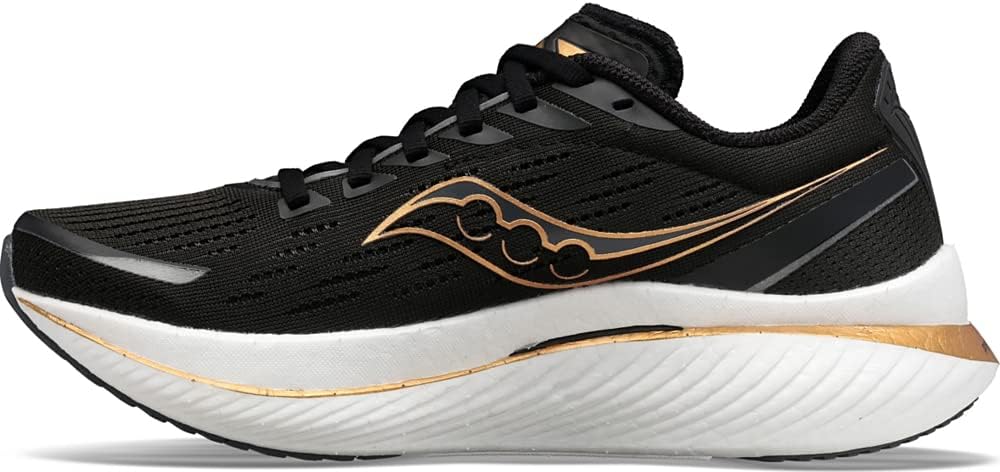
In our roundup of the best running shoes for beginners, the Saucony Endorphin Shift 3 deserves special attention for its ability to enhance the running experience. This shoe is an excellent choice for beginners, offering a harmonious blend of cushioning and ease, suitable for transitioning from weekday training to weekend long runs.
One of the key features of the Endorphin Shift 3 is its ample PWRRUN cushioning. This cushioning not only provides comfort but also aids in smoother transitions during runs. For beginners, this level of cushioning can make a significant difference, helping to reduce the impact on joints and making runs more enjoyable.
The Endorphin Shift 3 also introduces a lighter, softer, and speedier aspect to running. The softer side of SPEEDROLL Technology, enhanced with an extra 2mm of PWRRUN foam, emphasizes comfort, making it easier for new runners to maintain speed without sacrificing foot protection.
A standout feature of this shoe is its lightweight construction. The durable and lightweight mesh works in conjunction with a streamlined heel clip, offering necessary support without adding extra weight. This design aspect is crucial for beginners who are still developing their running form and need a shoe that won’t hinder their movements.
Moreover, the Endorphin Shift 3 improves running transitions. The new groove in the heel allows for a more natural and efficient touchdown and roll forward motion. This feature enhances the overall running experience, making each step feel more fluid and less strenuous.
These were my favorites among the best running shoes for beginners in 2024. I hope I was able to help you find the best running shoes for your needs.
To further help you along the way, I will next give you some tips on what to consider when choosing running shoes as a beginner.
What to Consider When Buying Running Shoes as a Beginner?
When buying running shoes, especially as a beginner, there are several factors to consider:
- Fit: The fit of the shoe is probably the most important aspect. It’s important that the shoe isn’t too tight or too loose. There should be enough room in the toe box for your toes to move freely, but not so much that your foot slides around. Similarly, the heel should be snug but not tight. Generally, you’ll want about a thumb’s width of space between your longest toe and the end of the shoe.
- Running style: Your running style, including where you primarily run (on a track, the road, a trail) and your stride, should guide your shoe selection. For example, if you primarily run on trails, you’ll want a shoe with more traction and stability to handle uneven terrain. If you’re running on roads, a lighter shoe with more cushioning might be a good fit.
- Foot type and pronation: Pronation refers to the way your foot rolls inward for impact distribution upon landing. Understanding your foot type and how you pronate can influence the type of running shoe you should purchase. Some people have flat feet (overpronation) and need more stability, others have high arches (underpronation or supination) and might need more cushioning. Neutral runners can generally wear any type of shoe.
- Comfort: While a shoe might technically fit and be suited to your running style and pronation, it also needs to feel comfortable. Some shoes might have a seam that irritates you, or a lack of breathability that makes your feet hot. It’s important to try on multiple pairs and styles to find what feels best for you.
- Durability: Check the durability of the shoes. While lightweight shoes can feel great, they might not hold up to heavy use. Consider the quality of the materials and construction of the shoe. Some runners find it beneficial to have a rotation of shoes to extend their lifespan.
- Price: Running shoes can be an investment, but there are options at different price points. As a beginner, you might not need the top-of-the-line model. Remember, the most expensive shoe is not necessarily the best shoe for your feet.
- Special needs: Do you have any special needs such as wider feet, bunions, or do you use orthotics? These are important considerations as they will affect the fit and comfort of your running shoes.
It’s a good idea to go to a specialized running store where the staff can analyze your gait and provide shoe recommendations based on your specific needs. Also, always try to shop in the afternoon or after a run, when your feet are at their largest, to ensure a proper fit.
Conclusion
When choosing the best running shoes for your needs as a beginner, there are many things to consider. Each of the ten shoes mentioned above offers unique features and technologies designed to enhance comfort, cushioning, and performance.
Consider your personal preferences, running style, and foot shape when making your choice. By investing in the right pair of running shoes, you as a beginner can enjoy a more enjoyable and injury-free running experience in 2024 and beyond.
FAQs – Best Running Shoes for Beginners 2024
As a beginner, you should look for running shoes that provide ample cushioning, stability, and a comfortable fit. They should also have good shock absorption to lessen the impact on your joints. Ensure they’re durable and suitable for the kind of terrain you plan to run on. Lastly, it’s important they fit well to prevent injuries and discomfort.
You can determine your foot type by doing a ‘wet test.’ Wet your foot, step on a piece of cardboard or paper, and observe your footprint. If you see half of your arch, you have a normal foot. If you see almost your entire footprint, you have flat feet. If you see just your heel, the ball of your foot, and a thin line on the outside, you have high arches.
Many brands offer shoes ideal for beginners, such as Brooks, Nike, Asics, New Balance, and Saucony. Each of these brands offers a variety of models to cater to different foot types, running styles, and comfort levels.
Generally, running shoes should be replaced every 300-500 miles. However, the exact mileage can vary depending on the durability of the shoes, your running style, weight, and the surfaces you run on. If you notice your shoes aren’t providing as much support or cushioning, it may be time for a new pair.
The best way to break in new running shoes is to start by wearing them for short periods of time during your day and gradually increasing the duration. You can also start by using them for shorter runs before gradually using them for longer sessions. Avoid running a long distance in brand-new shoes, as this can lead to discomfort or injuries.
Running shoes should fit comfortably snug in the heel and midfoot, with a little extra room in the toe box. Your toes should have enough room to move without rubbing against the front of the shoe. There should be about a thumb’s width of space between the end of your longest toe and the front of the shoe.
Yes, many shoe companies release models designed with beginners in mind, offering extra cushioning and support. For example, the Brooks Ghost 15, Asics Gel-Cumulus, and Nike Air Zoom Pegasus 40 have all received high marks in 2024 for their comfort, support, and beginner-friendly features.
Road running shoes are designed for pavement and occasional forays onto packed surfaces with slight irregularities. They are light, flexible, and cushion your feet well. Trail running shoes are designed for off-road routes with rocks, mud, roots, or other obstacles. They are enhanced with aggressive tread for solid traction and fortified to offer stability, support, and underfoot protection.
You can use the same running shoes on a treadmill as you do outdoors. However, because running on a treadmill can be softer than running on outdoor surfaces, some runners prefer shoes with less cushioning for treadmill use. It mainly depends on your personal comfort and preference.
While you can technically run in any type of athletic shoe, it’s highly recommended to use running-specific shoes when you run. Running shoes are designed to handle the forward motion and the specific type of impact running creates. Regular workout shoes might not provide the same level of cushioning, support, or durability that running shoes do, which could lead to discomfort or injuries over time.

